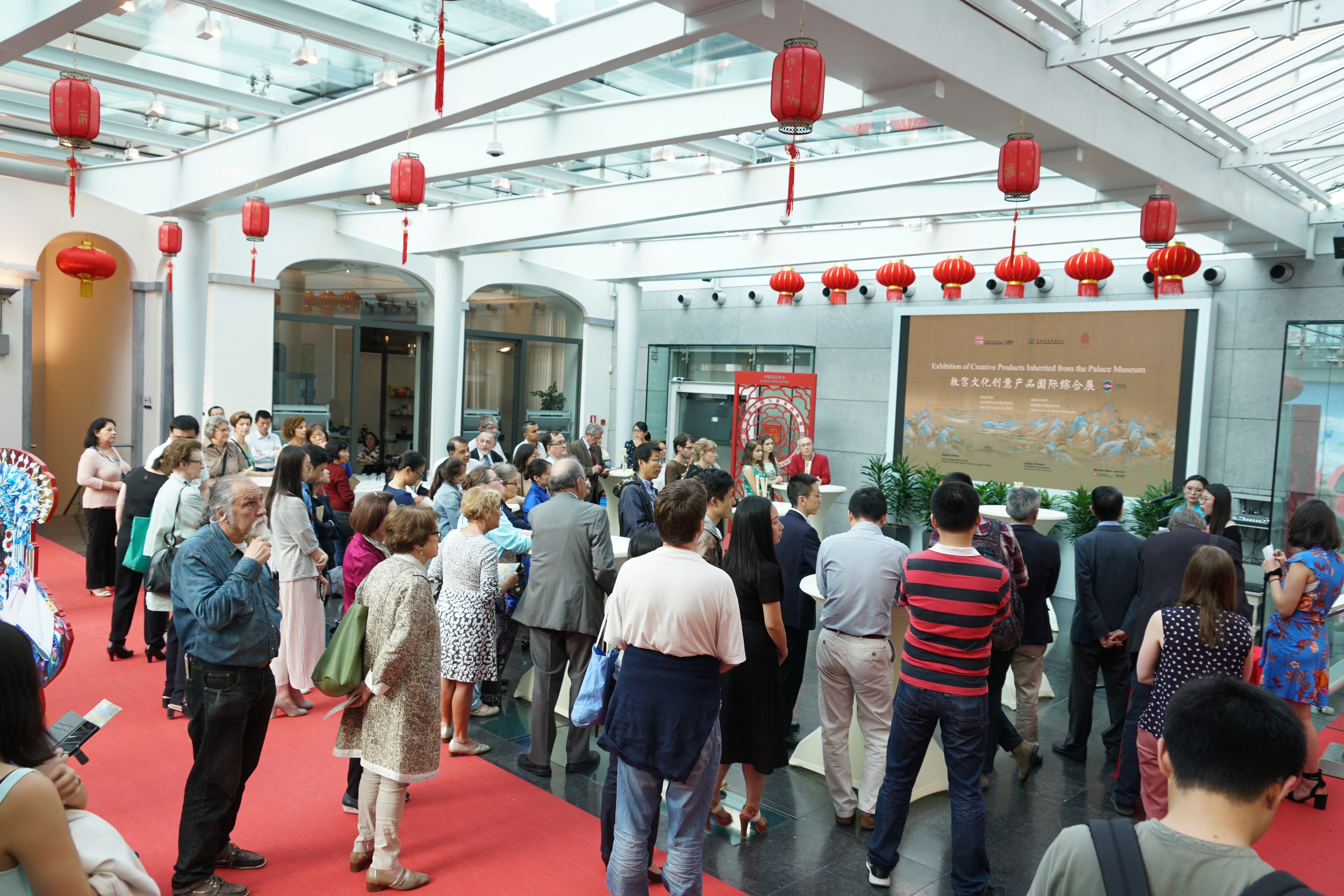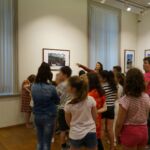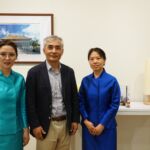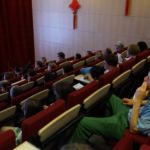When the European audience gets familiar with Chinese imperial history…

With the new exhibition “Creative Products Inherited from the Palace Museum”, the China Cultural Center in Brussels is delighted to bring a part of the Palace Museum to Brussels and share the unique history of the Forbidden City with the European audience.
In order to inaugurate this exhibition properly, the Center organized the Forbidden City Experience Night on Friday May 25th, gathering 130 people for a guided tour of the exhibition featuring 50 photographs of the Forbidden City and other fascinating activities.
On Friday 25th, the China Cultural Center in Brussels was pleased to present its newest exhibition “Creative Products Inherited from the Palace Museum”, letting new bits of the dazzling Chinese culture inside its premises for the great satisfaction of the European public. The first visitors of the exhibition were young pupils from a Flemish school who gladly discovered the unique objects before everyone else, as well as a short movie about the Forbidden City in order to learn more about Chinese culture. On the evening, an official inauguration was held at the China Cultural Center in the presence of some prestigious guests, namely Mrs. Pang BO, representative of the Palace Museum, Mr. XIANG Shihai, Counsellor for Culture of the Embassy of the People’s Republic of China in the Kingdom of Belgium and Mr. LI Jianmin, Minister Counsellor of the Mission of China to the EU.
Mrs. Pang BO, Representative of the Palace Museum, opened the evening by explaining the history of the Palace Museum and by highlighting the important role that the Museum plays in contributing to the inheritance of the culture and the promotion of cultural exchanges: “The Palace Museum, today listed as a UNESCO cultural heritage, used to be known as the Forbidden City, as during five centuries, it was the home to 24 emperors who lived here. Covering an area of 720 000 square meters, it is the largest wooden architectural complex in existence across the globe. It owns a vast holding of artefacts (up to 1 860 000 objects divided into 25 categories), and the largest collections of several mixes, with 350 000 pieces. Each year, we host a large community of tourists from across the globe, which represents around fifteen million of tourists.” She continued by sharing the values and missions of the Museum, as well as its achievements: “The Palace Museum values the development of cultural products and therefore brings life to antiquities preserved in the Museum by designing creative and innovative products, and has currently achieved a total of 9000 designed items. We wish to bring the culture of our palace Museum to a greater population, and to achieve the transformation and development of our culture in a creative and innovative way. Therefore, the Palace Museum went beyond the boundaries of China and reached Belgium, Benin, Singapore, Australia, Thailand and South Korea.”
With the aim of helping the European audience to immerse themselves into Chinese culture and its rich history, the Center organized the Forbidden City Experience Night. Several interesting activities were organized, among which were the screening of a documentary about the Forbidden City, explaining the background and meanings of this architectural complex of the Ming (1368-1644) and Qing (1644-1911) dynasties that encompasses centuries of imperial history and culture, as well as a quiz about the exhibition and the documentary. Through these activities, the guests were given the opportunity to learn about this fascinating part of the Chinese imperial history in a unique and amusing way. As a reward for their participation, the Palace Museum gladly offered widgets to the guests.
The guests also enjoyed a unique guided tour of the exhibition “Creative Products Inherited from the Palace Museum”, learning more about these creatively designed cultural products which perfectly represent the people’s everyday needs in China. The Palace Museum, where the objects come from, is regarded as one of the most prestigious museums across the world and is known for preserving, researching and exhibiting an extensive range of traditional Chinese art assembled on the basis of a core collection of imperial treasures from the two aforementioned dynasties. This exhibition is a unique and original way of familiarizing the European audience with the modernization of Chinese imperial history into objects of the Chinese people’s everyday life.
As the activities came to an end, the guests were invited to enjoy small Chinese bites during a very joyful reception, mixing artistic culture with food culture. The people gladly completed their quiz and exchanged it for a nice memory from China, after which they left the Center feeling inspired by an intriguing part of Chinese history.
The China Cultural Center in Brussels will gladly welcome your school for a guided tour of the exhibition. Please contact the Center by email info@cccbrussels.be or by phone +32(0)27044020 for more details.




